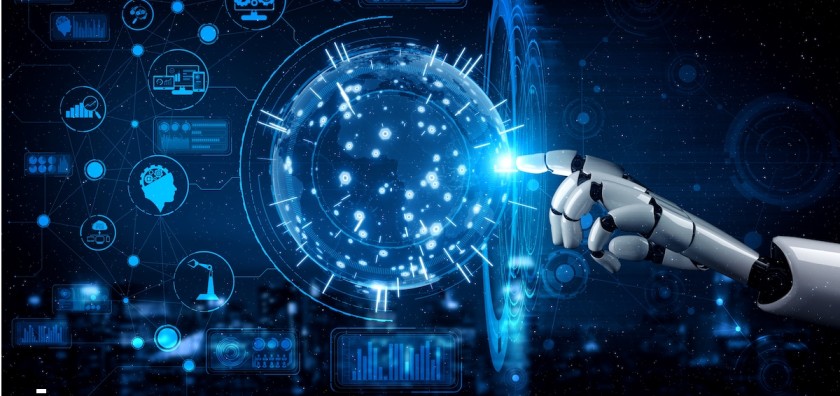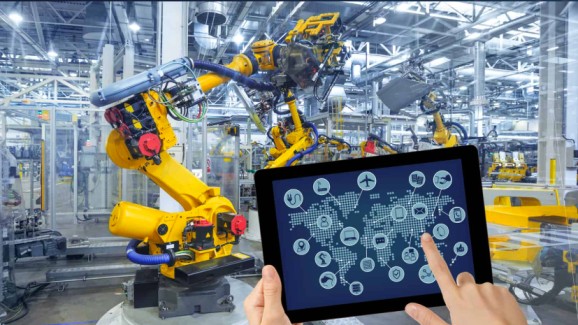Imagine no more, a smart home can actually change the temperature before people enter again. And even factories can anticipate equipment failures prior to the occurrence. Artificial Intelligence and the Internet of Things (or AIoT) created new discrepancies in the market. They work together to reshape modern business operations and human daily lifestyles. In this blog, we will consider how these tech’s intersections are helpful and how they assist different industries.
What makes AI special?
AI basically does the same thing as your mobile’s text prediction, but to a much greater extent than any mobile phone can do. Like any other human being, AI also learns from what it encounters in its lifetime. The reason why you see the recommendations during your online shopping is that an AI analyses your previous web activity and offers perfect product predictions.
What exactly is IoT?
In simple words, IoT gives voice to objects found in everyday life. Whenever the devices are connected to the internet, they are broadcast about what is happening around them. For instance, your smartwatch that monitors your steps, your connected doorbell that indicates who’s at the door of your home, as well as warehouse sensors that show the supply stock levels, etc., are the examples of Internet of Things.
AI+IoT = Magic Happens
When put to work, such technologies combine with impressive results. Therefore, here’s how they are impacting different sectors:
1. Making Buildings Smarter
The IoT sensors are installed smartly in the structure to create a smart building. The sensor measures room occupancy through motion detection, temperature variation across different zones, natural light levels, air quality and energy usage. With all this data, the AI system can go further and learn people’s behavior and how they use the building.
Such a system can predict when meetings usually take place, or when to modulate heating or cooling before rooms are filled, automatically control lighting depending on the amount of available natural light, and even save energy by turning off systems for areas that are not in use.
2. Revolutionizing Supply Chains
The use of IoT devices in the delivery process has enhanced the supply chain management systems in the current world. The systems in use include location-tracked vehicles, temperature sensors for perishable goods, RFID tags to track individual products and last but not least sensors for tracking warehouse inventory levels. This resource of information is used by the AI system to optimize operations in real time.
Then, it optimizes the supply chain by creating the most efficient delivery routes in function of the current traffic conditions, it anticipates the demand patterns to hold an optimal stock level, and detects potential problems before they can impact the supply chain.
3. Keeping Machines Running Smoothly
Predicting machine performance requires a set of sophisticated IoT sensors that monitor all the aspects that make machines work. They consist of vibration pattern tracking, operating temperature, power consumption, production speeds, and even oil levels and quality sensors.
With this feedback loop, the AI system tries to know the normal operation for each machine. It is particularly good at finding tiny changes that human operators would miss and can tell whether maintenance will be needed before anything serious happens.
4. Transforming Healthcare
The process of healthcare transformation using AI and IoT is a network of connected devices working hand in hand to achieve the goal. This comprises wearable health monitors, smart hospital beds, connected medical devices, patient controlling systems, remote patient monitoring systems and many others.
According to recent studies, 38% of healthcare experts utilize computer-assisted diagnostics because AI lowers the number of incorrect diagnoses and enables medical professionals to provide better patient care. It allows the AI to analyze the unending flow of data from these devices to find predictive patterns in vital signs, identify early health issues, put patient care on top of risk levels, and effectively manage hospital resources.
5. Building Smarter Cities
The IoT sensors smart city infrastructure comprises a traffic management system, public transportation system, waste management system, street lights and environmental stations. All this data is used by the AI system for improving the functioning of the city. It manages traffic, optimizes public transport timetables based on demand, coordinates the services within the city, and the quality of the environment for the inhabitants.
Why Your Business Should Care?
The combination of AI and IoT is not another trend but rather a necessity for business change. When these technologies are combined, there are great benefits for businesses across their operations. Smart systems largely reduce costs by optimizing energy consumption, stopping equipment breakdown, minimizing wastes and bracketing routine jobs.
Using live data and AI, it is easier to see which place and time of the day needs more employees and what product should be in stock. More importantly, from the business perspective, it allows for the delivery of the personalized experiences today’s customers want. AI and IoT (also known as AIoT) are capable of determining the maintenance needs of customers and offering services that are efficient, affordable and sustainable. These technologies are now essential in today’s digital economy environment to strive.
Final Words
AIoT is just in its dawn. So, along with the development of these technologies, many novel solutions will emerge. The question is no longer whether or not these technologies should be adopted, but how quickly they can be implemented to stay competitive with businesses.
Remember, starting small is okay. You can even get valuable insights and some value with even basic smart solutions. The fundamental thing is to take the first step and expand your capability through time. The future is about smart solutions and they are not really far from us.


3 thoughts on “The Intersection of AI and IoT: Smart Solutions for Modern Problems”